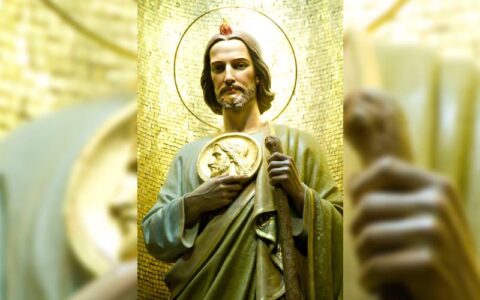St. Jude
St. Jude – Patron of Hope and Difficult Causes
Saint Jude was one of the Twelve Apostles of Jesus according to the New Testament. He is generally identified as Thaddeus, and is also variously called Jude of James, Jude Thaddaeus, Judas Thaddaeus or Lebbaeus. He is sometimes identified with Jude, the brother of Jesus, but is clearly distinguished from Judas Iscariot, the apostle who betrayed Jesus prior to his crucifixion. Catholic writer Michal Hunt suggests that Judas Thaddaeus became known as Jude after early translators of the New Testament from Greek into English sought to distinguish him from Judas Iscariot and subsequently abbreviated his forename. Most versions of the New Testament in languages other than English and French refer to Judas and Jude by the same name
St. Jude is traditionally depicted carrying the image of Jesus in his hand or close to his chest. Additionally, St. Jude is often depicted with a flame above his head, representing his presence at Pentecost, when he was said to have received the Holy Spirit with the other apostles.
St. Jude did not become widespread until the 20th century. Some believe that St. Jude was neglected because people confused him with Judas Iscariot, Christ’s betrayer. Whatever the reason, popular devotion to St. Jude is not only a recent phenomenon but, remarkably, has grown to be the strongest devotion to a saint in the Catholic Church, other than devotion to Mary, the Mother of Jesus.
Yet over the span of time since the life and death of Jesus and his Apostles, a considerable amount of tradition and legend has been built up around the life of St. Jude, and historians are able to piece together many fragments of information to give at least an understandable picture of this great saint.
On Oct. 28, the Catholic Church celebrates the feast of Saint Jude. Many people choose to carry the image of St. Jude on a medal or as a pendant on a necklace for comfort and call on him in their time of need and healing.

